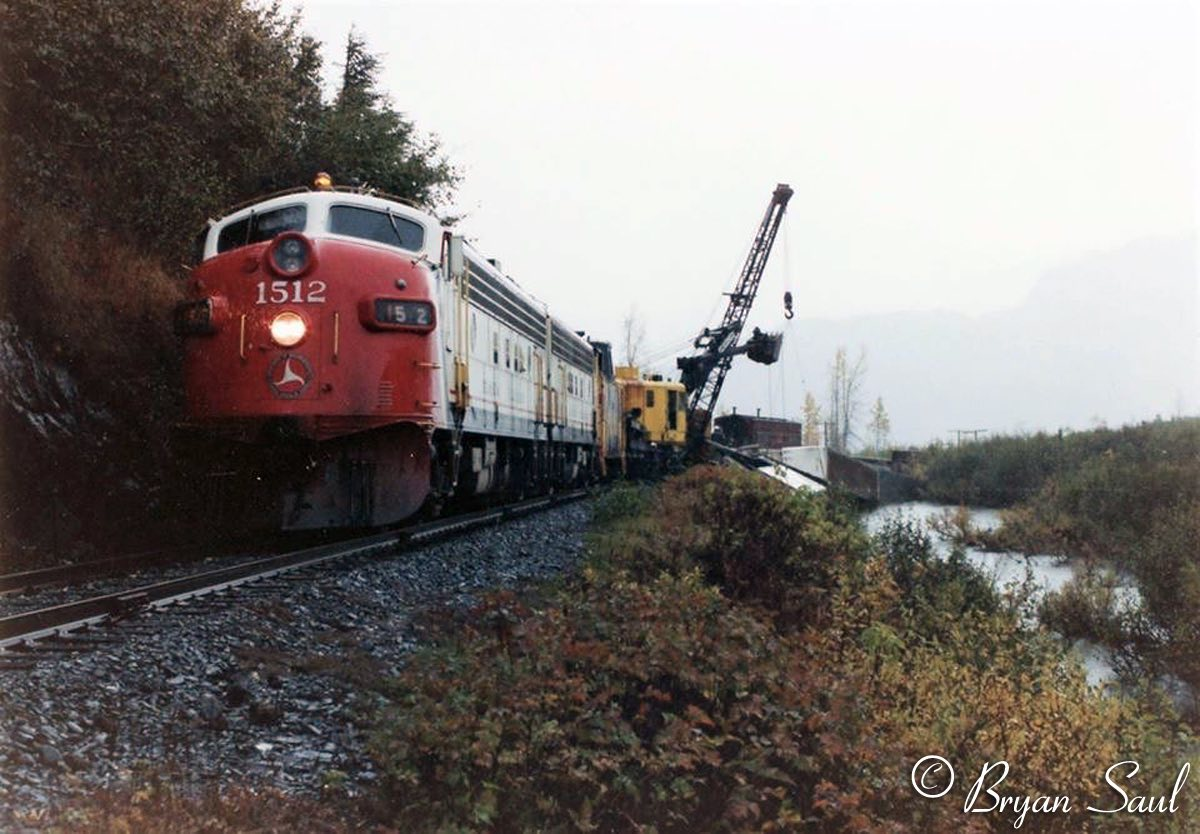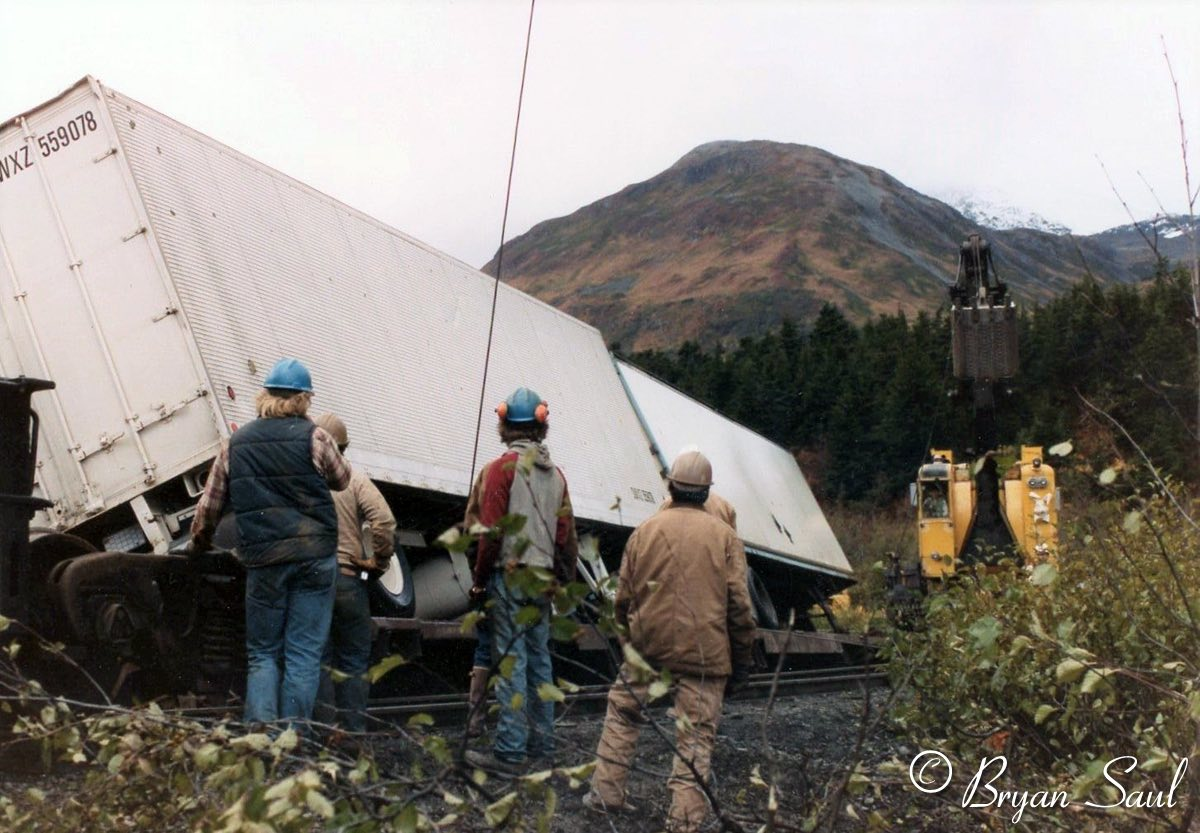Photographs courtesy of Bryan Saul
|
| Bryan Saul: I believe I took these shots in the late 1980's. Any help on the time frame would be appreciated, as my old time books are packed away. Just north of Grandview, a southbound TOFC train with Seaway trailers "string lined" a curve and subsequently dumped a bunch of flats on their sides. The backstory was that a certain Road foreman insisted that the engineer, Charlie Mills, give it one more notch. When Charlie refused, the Road foreman reached over the control stand and gave it another notch. I spent about three nights living in the outfit cars with Jeff Snyder and Stos picking up the mess.
|
Rick Leggett: I recall a string-line derailment (around 86 or 87?) with a southbound train, on the first curve north of the loop (curve 48A). The good news was that the cars behind the loco's came off the track with such force, they kind of flew over the rails and there wasn't all that much track damage for us to repair. Most of them almost ended up totally clear of the tracks and it didn't take that long to clear the main. I'm guessing Bryan, you ran the work train picking the cars up afterward? If I recall correctly, this was actually the second string-line derailment on this same curve within about five years...but I wasn't there for the first one. The second photo you have, is B&B cleaning out the concrete bridge at the top of the loop. In winter, it was critical to keep it open for a sudden thaw, because if the runoff didn't go under the bridge, it would run down the tracks and wash out half of the loop...like in this pic. The water had undercut the end of the ties all the way up under and past the east rail, so I didn't feel comfortable trying to dump ballast cars. The last thing we needed was a derailment on top of a washout (broken ties = wide gage = derailment) lol, so this is how we were able to re-ballast the track without taking a chance of putting any cars on the ground. In fact, we were able to just tamp the new ballast (with a tamper) and didn't even have to raise the track to repair the damage.
|
Bryan Saul: Rick, I'm fairly certain that both shots were taken of the same work train, just on different days, after some cars switching had been done. You can see some trailers on flats laying in the ditch in the second shot. Here's a pic of the same wreck looking south from the other side. I was amazed by the fact that the trailer fifth wheel still remained locked to the trailers after the derailment. It sure made the clean up easier.
|
| Rick Leggett: Yeah, you must have been involved with the other string-line derailment (same curve) as the one I was talking about, given that I don't recall having B&B or having/needing a crane and ditcher to clear the main. The lesson that should have been learned, is that you can put enough power on a long train to "get over the hill," but when the rest of the trailing train is creating drag by traversing 8-14 degree curves, on a 2.5%-3% grade...there's a lot of pressure to string-line on the head-end cars. If I recall correctly, the derailment I was at was under the watch of a new Anchorage Terminal Trainmaster (can't remember the name) who went against the advice of some old heads, telling him that the Seward-bound train was too long/heavy and just adding another loco was not the answer. |



